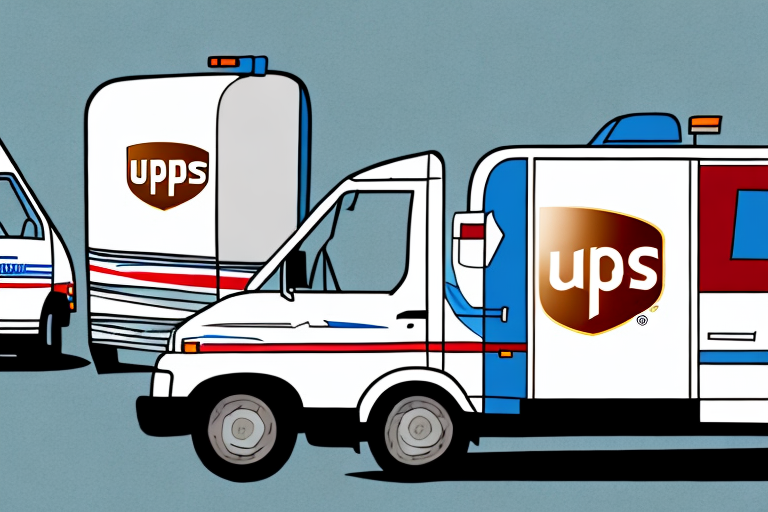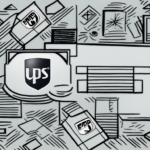Comparing UPS and USPS: Choosing the Best Delivery Service for Your Needs
When it comes to shipping packages and documents, selecting the right delivery service provider is crucial. In the United States, the two most popular options are the United States Postal Service (USPS) and United Parcel Service (UPS). Both offer reliable services, but customers often debate which one is better suited for their specific needs. This article provides an in-depth comparison of UPS and USPS, examining factors such as shipping rates, delivery times, coverage areas, tracking capabilities, customer service, special features, packaging requirements, shipping restrictions, and user reviews. By the end of this guide, you'll be equipped to decide which delivery service best fits your requirements.
Overview of UPS and USPS Services
UPS and USPS are two of the most established delivery service providers in the U.S., each with a long history and extensive service offerings.
United Parcel Service (UPS)
- Founded: 1907
- Key Services: Ground, air, and express delivery; logistics and supply chain management; hazardous material handling; temperature-controlled transportation.
- International Reach: Extensive global network with reliable international shipping options.
United States Postal Service (USPS)
- Founded: 1775
- Key Services: Ground and air shipping; money orders; passport applications; media mail; flat-rate shipping.
- Coverage: Broad domestic reach, including remote locations.
Both companies have adapted to the digital age by investing in technology and expanding their services to meet the demands of online shopping, ensuring their continued relevance in the delivery industry.
Shipping Rates and Cost Analysis
Cost is a significant factor when choosing a delivery service. Here's how UPS and USPS compare:
USPS Pricing
- Competitive Rates: USPS often offers lower rates, especially for smaller packages and lightweight items.
- Flat-Rate Options: Flat-rate boxes and envelopes provide cost-effective solutions for shipping heavy items within the U.S.
- Free Services: Many USPS services include free tracking and delivery confirmation.
UPS Pricing
- Business-Oriented: UPS tends to be more expensive but offers robust services suited for businesses with high shipping volumes.
- Customized Solutions: Additional services like package tracking, insurance, and specialized handling increase costs.
- Volume Discounts: Businesses shipping large volumes can benefit from discounted rates.
According to the 2023 E-commerce Shipping Report, USPS remains the more affordable option for individual shippers, while UPS offers better value for businesses requiring specialized services.
Delivery Timeframes and Reliability
Timely delivery is essential, and both providers offer various options to meet different needs.
USPS Delivery Times
- Priority Mail: 1-3 business days.
- Priority Mail Express: Overnight to 2-day delivery to most locations.
- Standard Shipping: Varies based on service selected.
UPS Delivery Times
- Next Day Air: Guaranteed overnight delivery.
- 2nd Day Air: Delivery by the end of the second business day.
- Ground Shipping: Typically 1-5 business days, depending on distance.
UPS is known for its reliability and precise delivery estimates, supported by comprehensive tracking systems. USPS offers competitive delivery times, especially for local and smaller packages, but may experience delays during peak periods. According to the 2023 Consumer Reports, UPS ranks higher in on-time delivery rates compared to USPS.
Coverage Area and Accessibility
Ensuring your packages reach their destination is vital, and both providers have extensive coverage, albeit with some differences.
USPS Coverage
- Domestic Reach: Extensive, including rural and remote areas.
- International Shipping: Limited compared to UPS, with restrictions on certain countries and items.
- Local Accessibility: Wide network of post offices and convenient package pickup options.
UPS Coverage
- Global Network: Comprehensive international coverage with reliable service in over 220 countries.
- Domestic Coverage: Nationwide, with specialized services for different regions.
- Accessibility: Fewer local drop-off points compared to USPS but offers extensive online service options.
UPS's global presence makes it a preferred choice for international shipments, whereas USPS excels in domestic coverage, especially in hard-to-reach areas. According to the UPS International Services and the USPS International Shipping, both providers offer reliable services within their coverage strengths.
Tracking Capabilities
Real-time tracking is essential for both senders and recipients to monitor the status of shipments.
UPS Tracking
- Detailed Information: Provides comprehensive tracking data, including estimated delivery times and real-time updates.
- Notifications: Email and SMS alerts for key shipment milestones.
- International Tracking: Extensive tracking for global shipments, including customs clearance updates.
USPS Tracking
- Basic Tracking: Available for most services, though details may be less comprehensive than UPS.
- Informed Delivery: Allows customers to preview incoming mail and packages digitally.
- International Tracking: Limited compared to UPS, with potential delays due to customs processing.
UPS offers more robust tracking features, which can be crucial for businesses and high-value shipments. USPS's Informed Delivery provides added convenience for individual users. For more details, visit the UPS Tracking Page and the USPS Informed Delivery.
Customer Service and User Reviews
Effective customer service can significantly impact your shipping experience, especially when issues arise.
UPS Customer Service
- Support Channels: Phone, email, and online chat support with responsive service.
- Reputation: Generally high ratings for reliability and problem resolution.
- Resources: Extensive online resources and tools for managing shipments.
USPS Customer Service
- Support Channels: Phone support and local post office assistance.
- Reputation: Mixed reviews, with some customers reporting delays in issue resolution.
- Accessibility: More physical locations for in-person support.
According to J.D. Power 2023 US Postal Service Ratings, USPS has room for improvement in customer service compared to UPS, which consistently receives higher satisfaction scores.
Special Features and Services
Both UPS and USPS offer unique features that cater to specific shipping needs.
UPS Special Features
- Supply Chain Solutions: Comprehensive logistics and supply chain management services.
- Specialized Shipping: Handling of hazardous materials, temperature-controlled shipments, and oversized packages.
- Technology Integration: Advanced tools for tracking, managing shipments, and optimizing logistics.
USPS Special Features
- Flat-Rate Shipping: Affordable flat-rate boxes and envelopes for predictable shipping costs.
- Media Mail: Cost-effective shipping for books, media, and educational materials.
- Informed Delivery: Digital preview of incoming mail and packages.
These special features make each provider suitable for different types of shipments. For example, businesses requiring advanced logistics will benefit from UPS's offerings, while individuals shipping standard packages may find USPS's flat-rate options more economical.
Shipping Restrictions and Regulations
Understanding shipping restrictions is essential to avoid potential issues and fines.
UPS Shipping Restrictions
- Prohibited Items: Includes hazardous materials, certain electronics, and restricted items.
- Regulated Shipments: Requires approval for items like lithium batteries and perishable goods.
- International Regulations: Must comply with the import regulations of destination countries.
USPS Shipping Restrictions
- Prohibited Items: Lithium batteries, certain chemicals, and items restricted by federal law.
- Regulated Shipments: Strict guidelines for packaging and labeling to prevent damage and ensure safety.
- International Restrictions: Varies by country, with specific regulations on items like food, plants, and electronics.
Both carriers have comprehensive lists of restricted and prohibited items. It's crucial to consult the UPS Shipping Restrictions and the USPS Shipping Restrictions before preparing your shipment.
Packaging Requirements
Proper packaging ensures the safe and efficient delivery of your items.
UPS Packaging Requirements
- Strict Guidelines: Adherence to packaging standards is mandatory to prevent damage and ensure compliance.
- Custom Packaging: Offers branded packaging solutions for businesses.
- Additional Costs: Non-compliance may result in additional fees or shipment refusal.
USPS Packaging Requirements
- Flexible Options: Provides a variety of packaging materials, including free Priority Mail boxes.
- Standard Compliance: Less stringent than UPS but still requires proper packaging to avoid damage.
- Cost-Effective: Free packaging options help reduce shipping costs.
Ensuring your packages meet the respective packaging requirements of UPS and USPS can save time and prevent additional charges. Refer to the UPS Packaging Guidelines and the USPS Packaging Guidelines for detailed instructions.
User Reviews and Ratings
Customer feedback provides valuable insights into the performance and reliability of UPS and USPS.
UPS User Feedback
- Reliability: High ratings for consistent delivery and package handling.
- Tracking: Users appreciate the detailed tracking information and real-time updates.
- Customer Service: Generally positive reviews for responsive support.
USPS User Feedback
- Affordability: Praised for cost-effective shipping options.
- Coverage: Valued for extensive domestic reach, especially in rural areas.
- Customer Service: Mixed reviews, with some users experiencing delays in issue resolution.
According to TrustRadius, UPS generally receives higher user ratings for reliability and tracking, while USPS is favored for affordability and widespread coverage.
Conclusion: Which Delivery Service Should You Choose?
Neither UPS nor USPS is universally better; the best choice depends on your specific shipping needs:
- Choose UPS if: You require reliable and fast delivery, advanced tracking, and specialized shipping services, especially for high-value or international shipments.
- Choose USPS if: You need affordable shipping options, broad domestic coverage, and cost-effective solutions for smaller packages.
By evaluating your priorities—be it cost, speed, coverage, or special services—you can make an informed decision that best aligns with your shipping requirements.
Final Thoughts on Choosing Between UPS and USPS
Both UPS and USPS continue to evolve, adding innovative features to enhance their services. It's essential to stay informed about the latest offerings and updates from each provider. By understanding the strengths and limitations of UPS and USPS, you can leverage their unique qualities to optimize your shipping and delivery processes effectively.




















